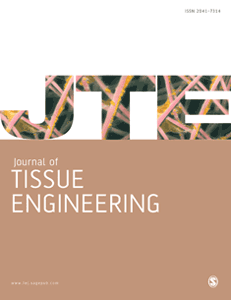经光遗传修饰的人类胚胎干细胞衍生耳神经元与耳蜗核建立功能性突触连接
IF 7
1区 工程技术
Q1 CELL & TISSUE ENGINEERING
引用次数: 0
摘要
螺旋神经节神经元(SGNs)受损可导致耳聋。一种重要的治疗方法是利用干细胞恢复受损的听觉回路。然而,研究方法的不充分实施对准确评估电路内衍生细胞的功能构成了挑战。在此,我们描述了一种将人类胚胎干细胞(hESCs)转化为耳神经元(ONs)的新方法,并利用细胞或大鼠耳蜗核(CN)有机切片共培养的光遗传学方法评估其功能连接性。胚胎干细胞衍生的耳神经元(eONs)在与耳蜗核神经元(CNNs)共培养时表现出SGN标记表达并产生功能性突触连接。在 eONs 与 CN 脑片共培养期间,在 eONs 投射过程的脑片耳蜗核中发现了突触素 1 和 VGLUT 的表达。光刺激eONs时,CNNs的动作电位尖峰和INa+/IK+同步增加。这些发现进一步证明,eONs可能是治疗SGN失聪的候选来源。本文章由计算机程序翻译,如有差异,请以英文原文为准。
Optogenetically modified human embryonic stem cell-derived otic neurons establish functional synaptic connection with cochlear nuclei
Spiral ganglia neurons (SGNs) impairment can cause deafness. One important therapeutic approach involves utilizing stem cells to restore impaired auditory circuitry. Nevertheless, the inadequate implementation of research methodologies poses a challenge in accurately assessing the functionality of derived cells within the circuit. Here, we describe a novel method for converting human embryonic stem cells (hESCs) into otic neurons (ONs) and assess their functional connectivity using an optogenetic approach with cells or an organotypic slice of rat cochlear nucleus (CN) in coculture. Embryonic stem cell-derived otic neurons (eONs) exhibited SGN marker expression and generated functional synaptic connection when cocultured with cochlear nucleus neurons (CNNs). Synapsin 1 and VGLUT expression are found in the cochlear nucleus of brain slices, where eONs projected processes during the coculture of eONs and CN brain slices. Action potential spikes and INa+ /IK+ of CNNs increased in tandem with light stimulations to eONs. These findings provide further evidence that eONs may be a candidate source to treat SGN-deafness.
求助全文
通过发布文献求助,成功后即可免费获取论文全文。
去求助
来源期刊

Journal of Tissue Engineering
Engineering-Biomedical Engineering
CiteScore
11.60
自引率
4.90%
发文量
52
审稿时长
12 weeks
期刊介绍:
The Journal of Tissue Engineering (JTE) is a peer-reviewed, open-access journal dedicated to scientific research in the field of tissue engineering and its clinical applications. Our journal encompasses a wide range of interests, from the fundamental aspects of stem cells and progenitor cells, including their expansion to viable numbers, to an in-depth understanding of their differentiation processes. Join us in exploring the latest advancements in tissue engineering and its clinical translation.
 求助内容:
求助内容: 应助结果提醒方式:
应助结果提醒方式:


